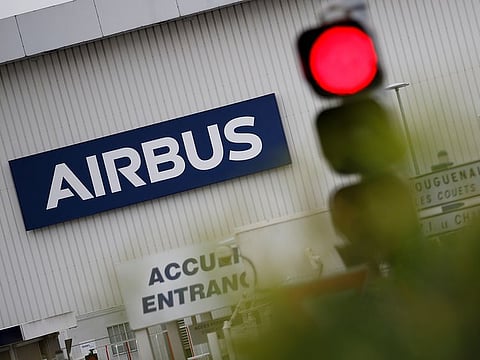Airbus wants to replace its bestselling A320 family by the mid-2030s
The single-aisle market is by far the most important segment of commercial aviation

Airbus SE said it wants to replace its bestselling A320 family by the mid-2030s, embarking on an all-new program that seeks to replicate the success of the model that put the European manufacturer on the map three decades ago and eventually eclipsed Boeing Co.'s 737.
The planemaker is engaged in two distinct projects: one for a smaller plane capable of flying about 1,000 miles (1,600 kilometers) and powered by hydrogen, and a short- to medium-range A320 successor that will use so-called sustainable aviation fuel, Chief Executive Officer Guillaume Faury said at Airbus's annual earnings conference in Toulouse.
"We're in the test phase," Faury said. "We're testing wings with a bigger span, with certain characteristics in terms of adaptability in the air. We're testing the propulsion systems."
The single-aisle market is by far the most important segment of commercial aviation, accounting for the bulk of aircraft and the biggest profit contributors for Airbus and Boeing. The two manufacturers have been locked in duopoly for decades, but the balance has tilted in Airbus's favor in recent years, hastened most recently by Boeing's woes with its 737 Max model that competes with the A320 type.
With the hydrogen-powered aircraft, Airbus plans to start at the smaller end "- carrying broadly 100 passengers "- then scale up depending on "success in time," Faury said. The next important milestone is selection of the propulsion system, with final details like size and target market locked down around 2025 or 2026, with an official launch in the 2027-28 timeframe, he said.
The successor to the A320 series will be a new platform and is set for entry into service in the second half of the next decade, he said. Seating capacity for those models range from about 140 to 240 people, depending on subtype and configuration.
For now, both companies have settled on advanced derivatives of their single-aisle jets, which in Boeing's case stretches back in to the 1960s. The planemakers most recently fitted new engines on their narrowbody models, though they are now finding that the airframes' capabilities are exhausted, calling for an all-new design approach.
Airbus's most recent all-new plane is the A350 widebody, which leans heavily on carbon-fiber materials. That's similar to Boeing and its 787 Dreamliner that entered service in late 2011.
The design of the new Airbus aircraft will depend on the engine selection, Faury said. Airbus is considering the architecture for the A320 successor, including CFM International's RISE open rotor engine that replaces the conventional ducted jet engine, for one with large jet blades, Faury said.
Boeing, which has prioritized paying down debt once it addresses its factory issues, partnered with NASA, US airlines and others last year on a project that could become a potential successor to the 737 Max.
Sign up for the Daily Briefing
Get the latest news and updates straight to your inbox



